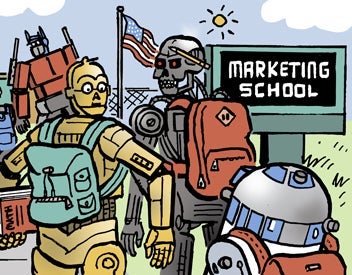When people think of social networking sites they usually don’t consider e-mail as part of the equation. However this will soon change, especially in light of recent announcements for upgraded social networking sites by Yahoo and Google.
To meet the needs of investors who don’t want to miss out on the “next Google or Yahoo” but are cautious of being overconfident about a Web phenomenon that is not yet proven, MySpace, FaceBook and the others will be forced to become inbox providers in an effort to increase revenue.
Based on this information, it is ironic when pundits declare that social networking will bring the death of e-mail. Social networking relies on e-mail for viral marketing and alerts. Based on the wide adoption of social networking sites over the past few years, coupled with the fact that the average user is increasing the amount of time spent on these sites, it is only natural for social networking sites to include inter-network e-mail as part of their service offerings. Get ready for MySpace, FaceBook and Linked-In to compete with Google, Yahoo and MSN for the inbox.
A recent study from Datamonitor reports that social-networking sites will enlist 230 million active members by the end of the year and will keep attracting new users until at least 2009 and plateau by 2012. Datamonitor predicts Asia Pacific will account for 35% of global social networking users by the end of this year, followed by Europe, the Middle East and Africa (28%); North America (25%); and the Caribbean and Latin America (12%).
Anyone who thinks the messaging systems in social networking sites will completely replace general consumer e-mail is simply not being realistic. Analysts, pseudo-journalists and bloggers have recently predicted consumers will dump their inboxes in favor of communicating through the likes of Facebook and MySpace, precluding e-mail marketers from reaching their customers. This is simply not so, based on the fact that if a user wants to open a Facebook account they need an e-mail address.
In 2008, I predict social networking sites will open their networks to become the new inbox providers of choice for ages 25 and younger. Instead of e-mail marketers trying to fight their way into the inboxes of Yahoo and Hotmail users, MySpace and Facebook will become the new gatekeepers of younger generations. E-mail is a daily time consuming ritual that can’t be ignored by online advertisers. And as social networking sites gain a larger share of advertising budgets, they will need to guarantee visitor time. Therefore e-mail must be included in social networking’s repertoire of services that are cannibalizing market share from AOL, Yahoo and the rest of the old guard.
As with all communication platforms, there is evolution and a natural progression for advertising revenue. MySpace and Facebook already have the infrastructure and these sites will need to become open for people to stay on the site. This will create a challenge as e-mail marketers look for ways to reach the under 25 set, a differ demographic in any marketing medium.
The argument to counter my prediction is that younger—and even some older—generations are spending less time in their inbox and are using social networking sites and SMS to communicate with friends and family. Social networking message systems and general email will become synonymous as MySpace and Facebook race to increase ad revenue. Don’t get me wrong—eventually e-mail marketers will have to contend with sharing some of their budget with similar mediums such as SMS. However, budgets will stay relatively intact as the demand for the ability to send messages directly to anyone in the world won’t go away anytime soon.
We often have short memories when it comes to Internet media and how it evolved into today’s landscape. We forget that the first widely adopted online social network was AOL. In 1996 you could share pictures with friends, post on message boards and hang out in chat rooms all within the confines of AOL’s proprietary borders. It too started with a closed network messaging system but demand to communicate with people outside its network forced it to become an inbox provider. Once AOL tore down its virtual wall the unthinkable happened. People actually spent more time engaged with e-mail giving them the opportunity to sell more ads. If the commercial Internet’s short history has any bearing on today’s “Web 2.0” revolution, history will recycle itself through social networking’s lifespan.
Elie Ashery is president of Gold Lasso.
 Network
Network

